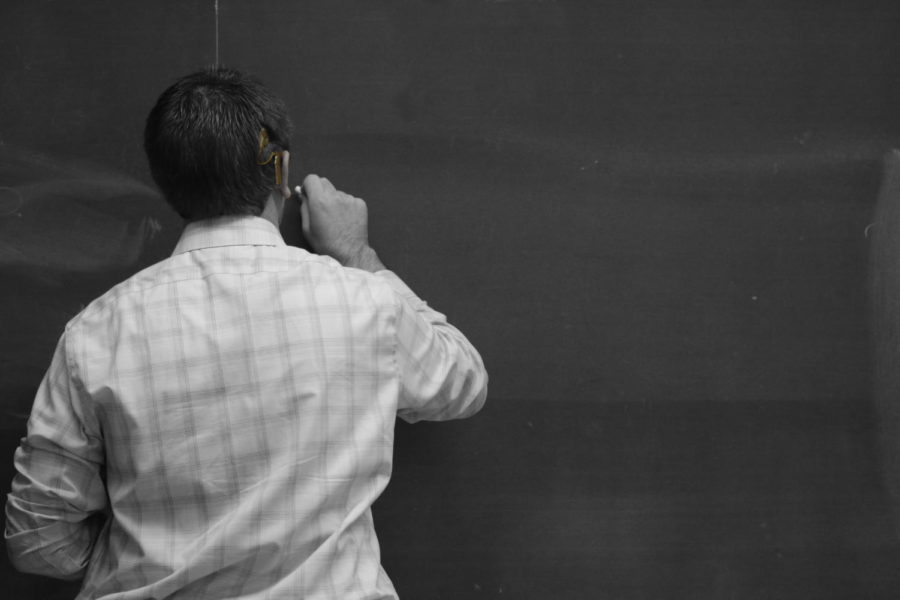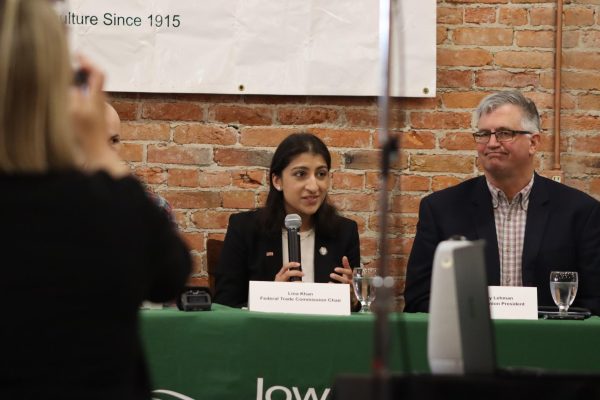Silence: A voiceless classroom demonstrates ASL, Deaf culture for ISU students
September 29, 2014
In a silent classroom, Michael Ballard communicates with his hands, facial expressions and exaggerated gestures.
His students are sitting in a circle, able to hear but asked not to speak.
Ballard is completely deaf.
He is immersing his class of hearing students in the Deaf culture by using American Sign Language.
“I always say dream big or go home, and if I can’t dream big here then I’m not sure exactly what I’d be doing here,” Ballard said via translator.
Ballard is beginning his first year at Iowa State and is the only deaf faculty member on campus. He transferred to Iowa State because he saw the potential for the program to grow.
“There’s no growth in comfort, but there’s also no comfort in growth,” Ballard signed.
ASL will be an approved minor by the end of this academic year due to the help and persistence from faculty and students, Ballard said.
Ballard, who is one of two ASL lecturers at Iowa State, said he believes that getting the minor declared would not have been possible without the help of the students.
“This was very much a student-led development,” Ballard signed. “The students really have worked some magic. It’s what they wanted and what they will definitely be able to benefit from.”
Julia Takemura, senior in integrated studio arts, is in Ballard’s introductory class. Julia said she thought that it was a great idea to have ASL certified as a minor.
“I think that’s fantastic,” Takemura said. “More people should be exposed to [ASL].”
Ballard said that there were several different steps in order to get the ASL minor established. He worked with department members and students to go through the Departmental Curriculum Committee, the college level Curriculum Committee and the Board of Regents.
ASL is a visual language that has been offered at Iowa State for two years.
It uses hands, body gestures and facial expressions to emphasize what the person signing is saying and feeling.
Ballard wanted to teach sign language to serve as a bridge in bringing the hearing world and the deaf world together.
He said he wanted to teach others that it is okay to be different.
In addition to teaching signing techniques, Ballard also educates his students about the Deaf culture. People who can hear sometimes think of deaf people as being impaired, he said.
Haden Hall, freshman in engineering, was exposed to the Deaf community his sophomore year of high school. He said if someone is born deaf he views them as having a disability but not a mental disability.
This is what people within the deaf community call lowercase “d” — the medical viewpoint when the ear simply does not work.
People within the Deaf community view deafness as a culture. They recognize the value of being deaf and being themselves. They are fully capable of doing anything that they want to do.
“I’m here teaching at a university,” Ballard signed. “My deafness doesn’t stop me.”
Ballard’s attitude and devotion to the ASL program has inspired students within his ASL classes to view deafness in a different way, labeled as uppercase “D” deafness.
People in the Deaf community or those have exposed themselves to the culture tend to have the uppercase “D” viewpoint where deafness represents the Deaf community and culture. It recognizes the value of being deaf and allows those who are deaf to feel capable.
“Our lives aren’t about whether we are deaf or not,” Ballard signed.
The department hopes to add more classes to the ASL curriculum.
Ballard said he would like to see a Deaf education program, as well as a course to train people to be interpreters.
Takemura said she believes that by taking sign language people can expose themselves to a completely different culture.
“Signing is not just some visual form of broken English,” Ballard signed. “It’s not something that we just add onto the English language. ASL is a thing of its own. It’s a living, breathing language.”
Ballard said students can benefit from learning ASL outside of the classroom. He said it could come in handy in a crowded setting where they might not be able to hear.
Signing can also help with secretive communication.
“If you want some privacy while you’re out on a date, learn to sign,” Ballard signed.

















